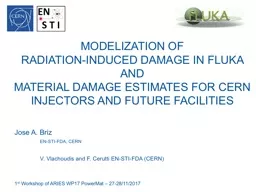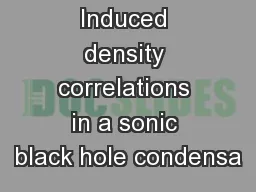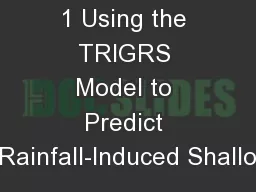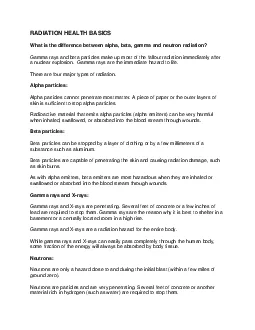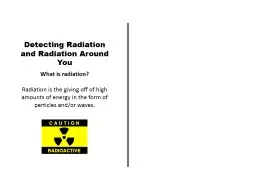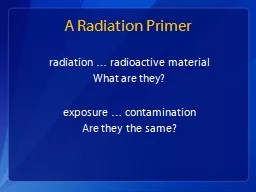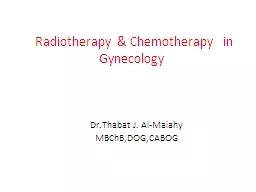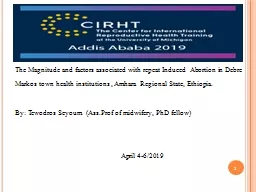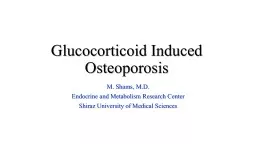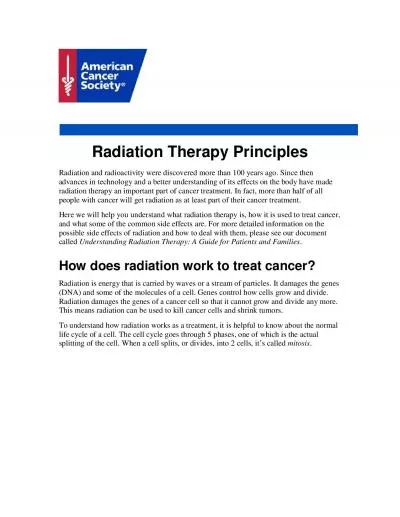PPT-Modelization of Radiation-Induced
Author : impristic | Published Date : 2020-06-17
Damage in FLUKA and Material damage estimates for CERN injectors and future facilities 2728112017 1st Workshop of ARIES WP17 Power Mat Politecnico de Torino
Presentation Embed Code
Download Presentation
Download Presentation The PPT/PDF document "Modelization of Radiation-Induced" is the property of its rightful owner. Permission is granted to download and print the materials on this website for personal, non-commercial use only, and to display it on your personal computer provided you do not modify the materials and that you retain all copyright notices contained in the materials. By downloading content from our website, you accept the terms of this agreement.
Modelization of Radiation-Induced: Transcript
Download Rules Of Document
"Modelization of Radiation-Induced"The content belongs to its owner. You may download and print it for personal use, without modification, and keep all copyright notices. By downloading, you agree to these terms.
Related Documents

